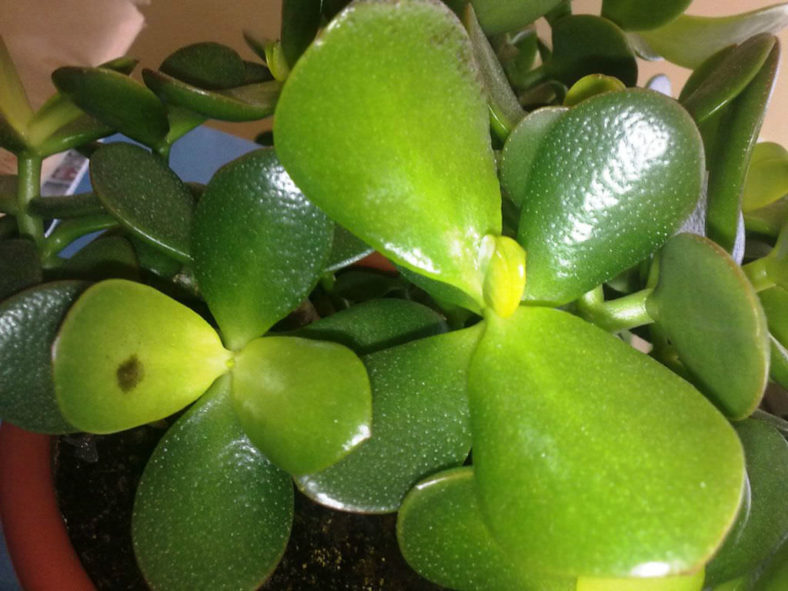Crassula ovata, commonly known as Jade Plant, is one of the most popular succulent houseplants. There are many varieties to choose from, each with similar cultivation needs. Jade Plant problems that cause black spots range from insects, viruses, fungal diseases, and even incorrect care. Native to South Africa and Mozambique, the Jade Plant has low moisture needs and can become seriously damaged in poorly draining containers and planting media. Sucking insects and various diseases can also affect foliar health and appearance.
It is important to investigate possible causes of black spots on Jade Plant leaves. Proper diagnosis can lead to the correction of the issue and the return of your plant's health.
1. Insects
Insect pests of Jade Plants include mealybugs, spider mites, and aphids. Mealybugs appear as tiny balls of white cotton. Removal with cotton swabs dipped in alcohol is the recommended treatment. Spider mites are tiny black insects thriving on dusty plants and feeding on the undersides of leaves, causing the Jade Plant to look speckled. Control of spider mites involves wiping Jade Plant leaves with water or alcohol. Aphids are sucking insects that feed in colonies. The color of aphids ranges from green to yellow, brown, or black. Honeydew excreted by aphids provides a growing medium for sooty mold, causing black discoloration on Jade Plant leaves. Wash infected leaves to remove aphids as soon as they are discovered. Insecticidal soaps should not be used on Jade Plants.

2. Viruses
Viruses can cause black spots on Jade Plant leaves. The black ring virus appears as black spots on the undersides of leaves. The tomato-spotted wilt virus, a tospovirus, also creates dark or black spots on the leaves of infected plants. Although viruses do not kill Jade Plants, they can be systemic, so infected plants should not be used for propagation. Spread by insects, viruses are best controlled by preventing insect infestation.
3. Fungi
Fungal disease can cause black spots on Jade Plant leaves. Due to their succulent tissues, Jade Plants are less troubled by fungal disease than many other plants. However, anthracnose and other fungal diseases can disfigure Jade Plants when humid conditions prevail. In addition, pruning plants with infected tools contributes to the spread of fungal disease. Wipe pruning equipment with alcohol or another disinfectant to prevent the spread of disease.
4. Water
Jade Plants require good drainage. Planted in sandy soil in clay pots, Jade Plants need water only when dry. Too much water causes root rot or edema. Root rot results in dropping leaves and the death of the plant. Edema, characterized by swollen cells resembling blisters, typically begins on the lower, older leaves. Blisters become discolored and turn corky. Often, affected leaves fall off the plant.
Source: sfgate.com
Links
- Back to genus Crassula
- Succupedia: Browse succulents by Scientific Name, Common Name, Genus, Family, USDA Hardiness Zone, Origin, or cacti by Genus